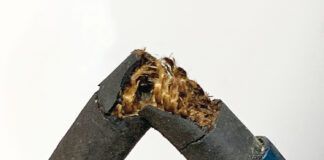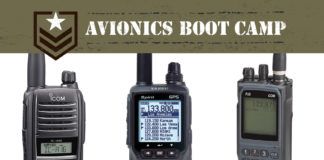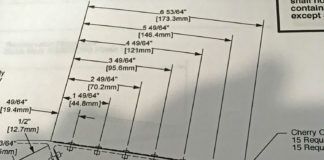In the 112 years since the Wright brothers flew, an enormous amount has been written about airplane design. Courses in airplane design are taught at many major universities, and students study the physics and technology of flight in great detail.
All of these efforts aim to teach the proper way to design airplanes. What is missing from the textbooks and courses on airplane design is how to do it wrong.
This is unfortunate because the mistakes of the past are a great source of insight and understanding. There are several common design traps that show up repeatedly throughout the history of aviation.
This month we will look at one of these sad stories, so that we can learn how not to repeat the same unfortunate script in our own design efforts.
Let the Mission Design the Airplane
One of the most common design traps, particularly in the homebuilt and startup company world, is to fall in love with a configuration too early in the design process. A fundamental tenet of good design is, “Let the mission design the airplane. Don’t let the airplane design the mission.” This is probably the single most important bit of advice I can give to any aspiring airplane designer.
Setting mission requirements is the first step in the development of any good design. Every airplane is designed to perform a specific mission. Once the mission is defined, the airplane should be designed to best perform that specific mission.
That sounds pretty obvious. Unfortunately, some designers—particularly of homebuilts—seem to design the airplane first and then see what it can do. If they are lucky, the airplane does what is needed well enough to be acceptable. If not, they end up with a machine that does not meet requirements. It may be very good at something that the operator of the machine does not need done. It may perform poorly in the areas that are important. In either case, it is unlikely to be a success.
This type of problem is particularly common when the designer chooses the configuration first, and then tries to make the configuration match the mission. This is a backwards approach, which rarely produces a good airplane.
Designers often fall into this trap because they fall in love with what they see as a large advantage of a particular configuration. Unfortunately, the perceived advantage is frequently not as large as originally imagined, and the offsetting disadvantages of the configuration can quickly eat away the initial advantage. It is crucial that the designer evaluate the advantages and disadvantages of a configuration in light of how they affect the airplane’s performance of the design mission. If the designer looks only at the pluses of a concept, the minuses are likely to sneak up and kill the design.
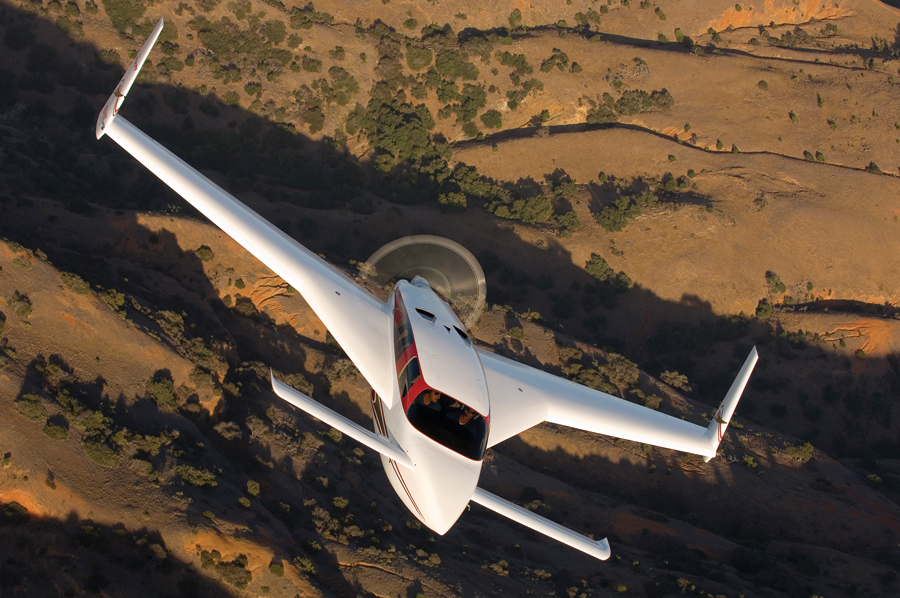
Canard designs, such as the Velocity, have had great success in the homebuilt world. However, there were many problems when the configuration was applied to larger aircraft for business travel.
Perceived Advantages
Often, the designer will choose a particular configuration because it appears to offer significant advantages for the mission. This is particularly true of unconventional configurations. The advantage (real or perceived) can take several forms:
Performance: The configuration might have the promise of better performance than other concepts. It could have lower drag, higher maximum lift, better packaging that makes it lighter, or some other advantage related to the performance of the airplane.
Cost and Manufacturability: Not all innovation is aimed at increasing the performance of the airplane. Cost and ease of manufacture are major players in the commercial success of a design. Assembly time and ease of assembly are major factors in the kit and homebuilt world. If a configuration or construction technique offers a significant decrease in cost or assembly time, it could provide a significant advantage over competing products.
Marketing: A very common reason for a designer to prefer a particular configuration is because it is promised to appeal to potential customers. If the airplane looks sleek or advanced, it will often sell better than a more pedestrian-looking airplane with equivalent performance. If the cool look is combined with a good story about technical advantages of the configuration, you have a marketer’s dream.
Having an unconventional or “advanced” configuration is often the only way a startup company can attract financing. Investors are likely to be wary of a startup company that wants to produce a conventional machine to compete with established manufacturers. If the potential investors can be convinced that the new airplane will be technologically superior to the established companies’ offerings, they are more likely to take the risk of financing the company.
This phenomenon was likely responsible for the flock of canard turboprop business airplane prototypes that appeared in the 1980s. Avtek, OMAC, and AASI all planned to develop and sell canard-configured turboprop business airplanes. All three companies flew prototypes or “proof of concept” airplanes, and AASI even got an early version of their Jetcruzer certified. But none reached production.
Now, before we get a lot of unhappy letters from canard aviators, there is nothing fundamentally wrong with the canard configuration, as the VariEze, Long-EZ, Berkut, Cozy, Velocity, etc. prove. Despite this, none of the business airplanes mentioned ever got to the point that they had any advantage over conventional airplanes. They also had some serious problems that were unique to the canard configuration for airplanes of the size and power appropriate for business travel.
Problems
As noted above, the mission should shape the configuration of the airplane. If we choose a configuration in advance, it might not work very well because the configuration does not match the mission. Problems can arise in several ways:
Advantages Might Not be Real or Useful: Assuming the designer was not totally bewildered from the start, a configuration might be chosen because it appears to offer an advantage. Unfortunately, sometimes that advantage is more theoretical than real. We might, for example, choose a pusher configuration because we believe that getting the propeller slipstream off of the fuselage will reduce drag by eliminating a “built-in headwind.” While this may be true in theory, we are likely to find that the drag increment is very small, and other considerations will dominate the design so much that it will actually prove to offer no measurable improvement over a tractor.
In evaluating a configuration, it is important to determine if the perceived advantage of the configuration will actually produce any useful improvement in performance or cost. If it doesn’t, then even if the advantageous effect actually occurs, it is not useful.
Advantages Overcome by Disadvantages: This is probably the place where most “configuration-driven” designs get into trouble. The favorable effect we are trying to get with our configuration might be real and work as advertised. Unfortunately, the configuration might have other problems that negate the advantage.
The pusher configuration in our previous example can be one such example. A pusher definitely does get the slipstream off of the skin of the airplane and reduces skin friction drag. At the same time, the pusher configuration puts the propeller in the wake of the fuselage and flying surfaces. These wakes can hurt propeller efficiency and make a lot of noise. The reduction in propeller efficiency can quickly eat up any gain we got from reduced drag, and the noise annoys airport neighbors. Inability to meet flyover noise requirements was one of the reasons AASI cited for terminating their Jetcruzer 500 program.
Another example is the often-cited advantage for canards that the foreplane lifts to trim the airplane as opposed to a conventional aft tail that usually pushes down to trim the airplane. While this is true, it is overcome by another phenomenon. An aft tail is much more effective at trimming the pitching moment of flaps on the main wing. Accordingly, an aft-tail airplane can have a more effective high-lift system. This lets it work the main wing hard enough that it more than overcomes the canard’s advantage of trimming with foreplane lift instead of tail downforce.
Difficult to Integrate: Regardless of how advanced its concept is, the airplane must still carry its payload, balance, have good structural load paths, and generally function well as a machine. Some configurations lend themselves better to these tasks than others. It is not uncommon for a new configuration to fail when the designer tries to get everything aboard, install the engine, make it balance, and get the structure to hold together.
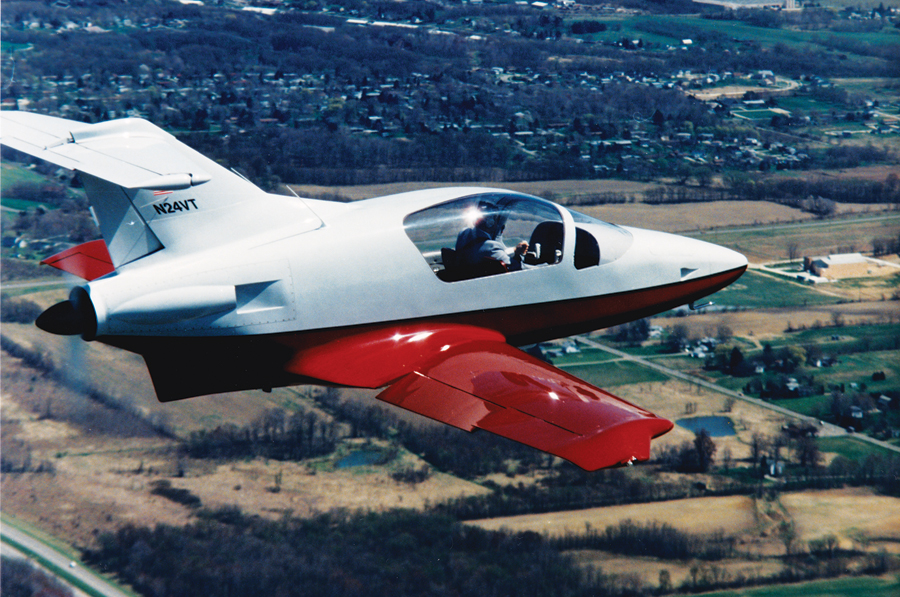
KITPLANES contributor Vic Syracuse flies his Prescott Pusher circa 1988. Vic’s was the first customer-built Prescott to be completed.
Cool, But Doesn’t Fly Well: A cool-looking configuration with a lot of ramp appeal might enjoy a brief period of excitement when it first appears and get some sales based on its attractiveness. In the long run though, if the airplane doesn’t perform very well, or has poor flying qualities, the word will get out quickly and sales will dry up. Customers want airplanes that fly well, and will not forgive poor performance or a hard-to-fly airplane just for looks.
The Prescott Pusher was a good example of this phenomenon in the kit airplane world. The Prescott got a lot of attention when it first appeared because of its pusher configuration and jet-like appearance. Unfortunately, once it got into the air, it proved to have disappointing performance. It also had some flying-qualities issues that were a matter of concern. The combination of lackluster performance and quirky handling quickly overcame the excitement generated by the appearance of the airplane, and the Prescott faded from the scene. There is still one Prescott Pusher active that I know of. It has been at Oshkosh repeatedly and is an example of pure persistence on the part of its owner. It has numerous modifications that solve many of the shortcomings of the original design.
Warning Signs
If you are working on a design, here are a few things to watch out for that will warn you that you are in danger of falling into the “configuration first” trap.
Conceptual purity: If you find yourself thinking more about maintaining the purity of the concept of the airplane than about how the airplane will work, then beware. It is not uncommon to hear someone say, “We can’t do that because then it wouldn’t be a true (configuration concept).” It doesn’t matter if your final design is a pure example of the concept, as long as it does the mission well.
Wishful thinking: A new configuration must work over the entire flight envelope, and the designer must evaluate its performance honestly. Thinking primarily of the perceived advantage of the configuration, while paying less attention to overall performance, leads to trouble. If you find yourself fixating on the good features of the configuration while trying to minimize or explain away problems, you are probably headed for trouble.
Integration and Compromises: As you work to put the design together, be alert to how many changes and compromises you have to make to make things work. The more compromises you must make to keep the configuration intact, or to preserve the perceived advantage of the concept, the more likely it is that the configuration is a technical dead end for your particular mission. If you look at the history of unsuccessful, unconventional airplanes, you usually find a series of modifications and fixes appearing as the designer tries to patch up the problems that made the configuration unsuitable in the first place.
Radical and unconventional configurations have their place, and sometimes they can lead to great advances. Just be sure that your unconventional approach really works and gives better mission performance than a conventional low-risk design.

![]()
Barnaby Wainfan is a principal aerodynamics engineer for Northrop Grumman’s Advanced Design organization. A private pilot with single engine and glider ratings, Barnaby has been involved in the design of unconventional airplanes including canards, joined wings, flying wings and some too strange to fall into any known category.










